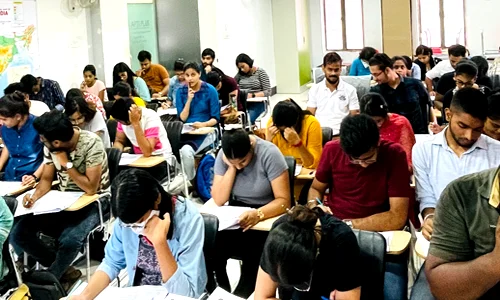



Retail inflation in India fell to a historic low of 0.25% in October 2025, primarily due to GST rate cuts, a favourable base effect, and a decline in prices of key food items such as vegetables, fruits, oils, and eggs. While food and beverage prices contracted, most other categories, including fuel, housing, and miscellaneous goods, saw higher inflation compared to last year. The decline provides short-term relief to households and businesses, stabilizes macroeconomic conditions, and supports policy measures aimed at economic growth and price stability.
Click to View MoreIn October 2025, India’s Goods and Services Tax collections reached ₹1,95,936 crore, up 4.6% from the previous year, partly due to festive spending. GST, introduced in 2017, replaced multiple indirect taxes to create a unified system. While industrialized states like Maharashtra, Karnataka, Gujarat, Tamil Nadu, and Haryana contributed over 40% of revenue, 20 states saw declines compared to pre-GST levels. Analysis shows that overall GST revenue remains lower than pre-GST taxes, with states like Mizoram and Nagaland improving collections, while Punjab, Chhattisgarh, Karnataka, Madhya Pradesh, and Odisha experienced significant drops.
Click to View MoreIndian households are accumulating debt faster than they are building financial assets, with liabilities growing 102% between 2019 and 2025, while assets grew only 48%. Bank deposits remain the main savings vehicle, but mutual funds are increasingly popular. Rising household debt poses economic, financial, and social challenges, highlighting the need for financial literacy, responsible borrowing, long-term investments, and supportive government policies to ensure sustainable household financial health.
Click to View MoreIndia aims to become a $30 trillion economy in the next 25 years, driven by sustained GDP growth, strategic government policies, and long-term planning. While past growth trends and currency factors make this projection plausible, challenges such as slowing growth rates, inflation, and infrastructure gaps remain. Achieving this goal will require multi-dimensional efforts in trade, investment, technology, and human capital development, positioning India as a major global economic power by 2050.
Click to View MoreIndia’s public debt, currently around 57% of GDP, has been rising due to persistent fiscal deficits, growing welfare and infrastructure spending, and higher interest costs. High debt limits fiscal flexibility, increases taxpayer burden, and can slow economic growth. The government is addressing this through fiscal consolidation, tax reforms, optimized expenditure, and debt management strategies, aiming for a sustainable debt-to-GDP ratio of 50% by FY31 while supporting economic growth.
Click to View More
The government has reduced customs duties on gold imports to lower gold prices, curb smuggling, and boost official trade. While these measures helped reduce illegal imports and bring some price relief, gold prices remain high due to global economic factors, currency depreciation, and strong demand. Moving forward, further duty cuts, better regulation of digital gold, strengthening anti-smuggling efforts, and revitalizing gold monetisation schemes are recommended to stabilize prices.
Click to View More
The rising trend of freebies in India offers short-term relief but poses long-term fiscal and developmental challenges. While such schemes can boost popularity and provide temporary benefits, they strain state finances, reduce productivity, and create dependency. In contrast, inclusive development focuses on sustainable empowerment through education, health, skills, and infrastructure, leading to lasting social and economic progress. Balancing empowerment with fiscal discipline is essential to ensure both social justice and economic stability.
Click to View More
© 2025 iasgyan. All right reserved